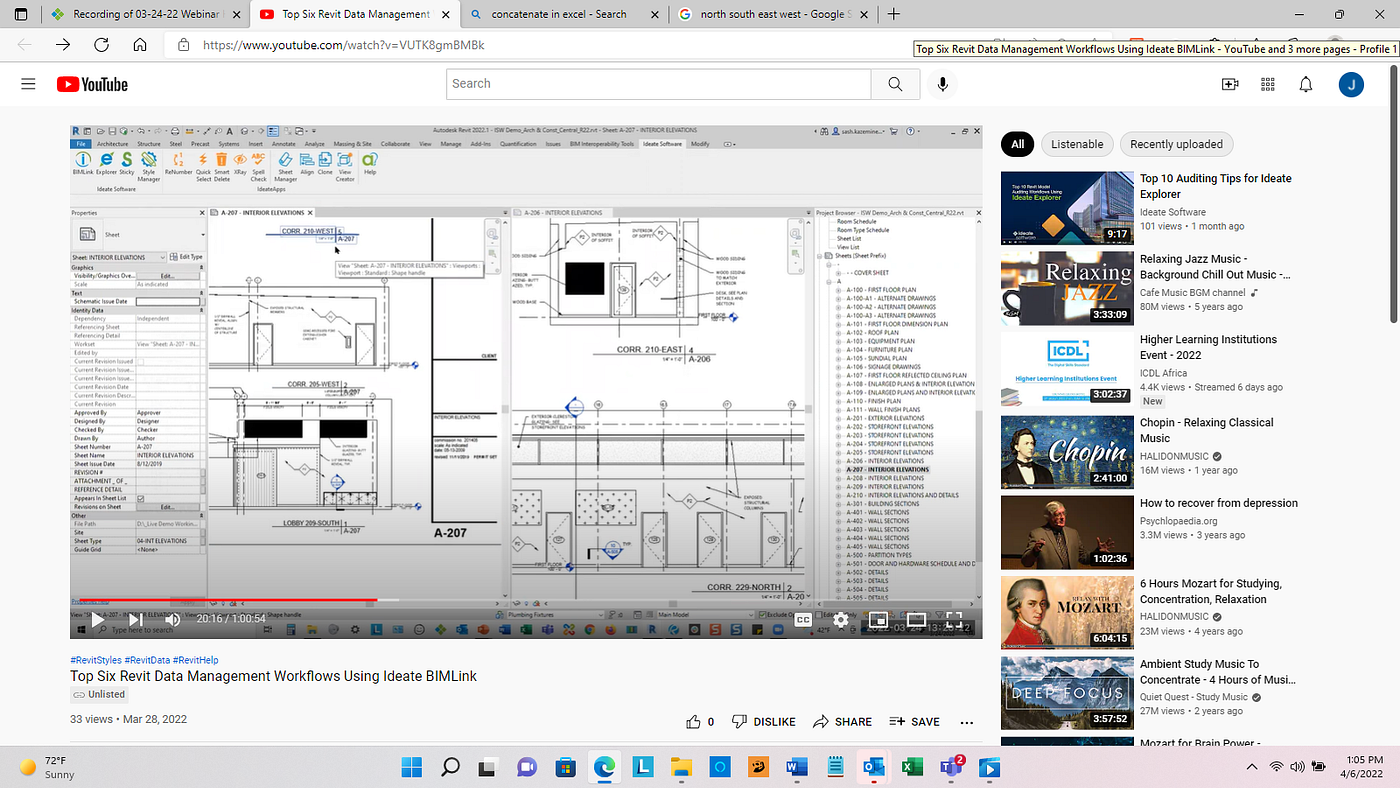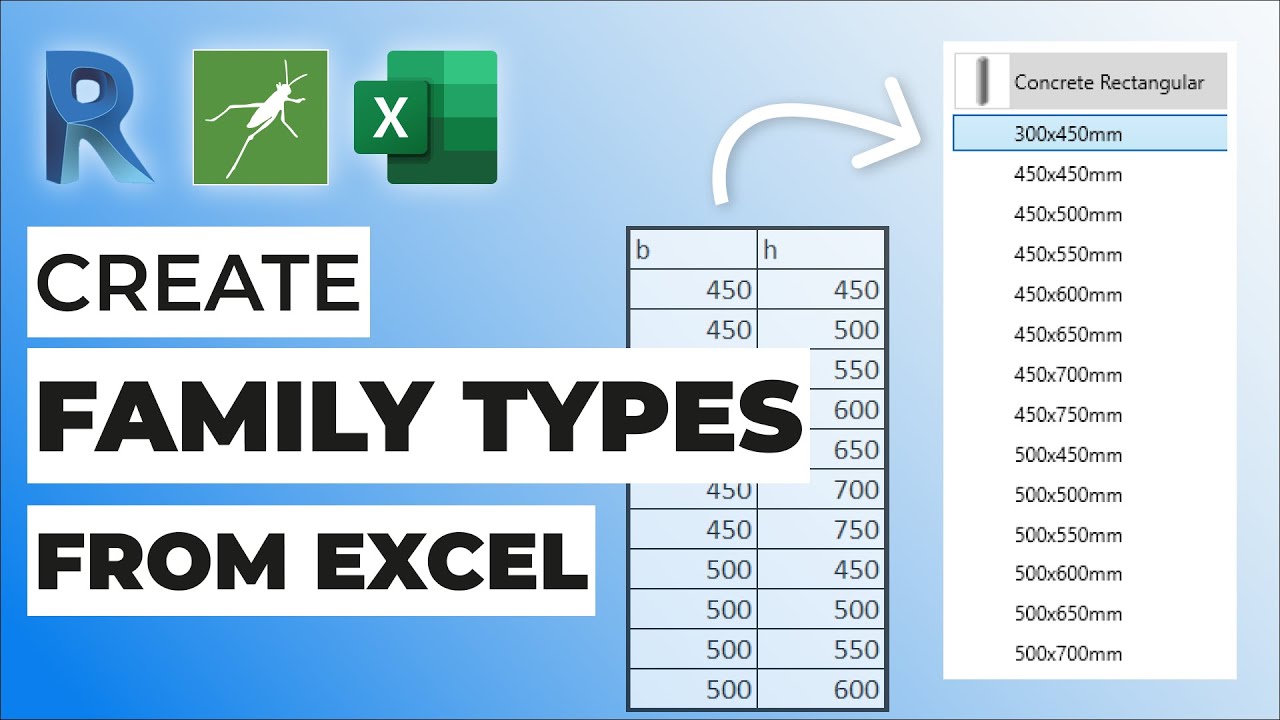Import Excel into Revit: Streamlining Your Operations
Wiki Article
Revit Accelerator: Excel Combination Strategies for Enhancing Efficiency and Collaboration
Are you looking to enhance your performance and partnership while using Revit? Look no further! In this write-up, we will discover the advantages of integrating Excel right into your Revit process. Discover how you can simplify your procedures, make best use of cooperation, and even find out sophisticated techniques for raising efficiency. Plus, we will certainly share finest techniques for seamlessly incorporating Excel into your Revit projects. Prepare yourself to supercharge your Revit experience with our Revit Accelerator: Excel Assimilation Techniques!Advantages of Excel Assimilation in Revit
The benefits of Excel combination in Revit are numerous and can considerably enhance efficiency and cooperation. By perfectly linking these 2 powerful tools, you can improve your workflow and save useful time. With Excel integration, you can conveniently import and export data between Revit and Excel, enabling you to leverage the toughness of both programs.
Another benefit of Excel combination is the capacity to develop vibrant schedules and reports. By connecting your Revit version to an Excel spread sheet, any kind of adjustments made in Revit will automatically update in the matching Excel documents. This makes it very easy to generate updated routines, quantity launches, and other job documentation.
Excel integration in Revit also enables better partnership among team members. With the ability to import and export data, you can easily share information with coworkers who may not have accessibility to Revit. This advertises reliable interaction and enables for better coordination and decision-making.
Improving Workflows With Revit and Excel
Improving operations with Revit and Excel can greatly boost efficiency and collaboration. By integrating these 2 effective devices, you can optimize your style process and boost communication within your group. With Revit, you can develop 3D versions and create comprehensive architectural and engineering paperwork. However, when it involves data administration and analysis, Excel is the go-to software. By incorporating the capabilities of Revit and Excel, you can perfectly transfer information in between the two applications, getting rid of the demand for hands-on information entry and lowering the risk of errors.
Utilizing Revit and Excel together allows you to leverage the strengths of each program - revit tool. You can export data from Revit into Excel, where you can execute intricate calculations, develop graphes and graphs, and assess the details in an extra well organized and effective way. On the other hand, you can import data from Excel into Revit, enabling you to rapidly update your versions and paperwork based on adjustments made in check these guys out Excel
The assimilation of Revit and Excel likewise advertises partnership among group participants. By sharing Excel files, you can conveniently interact and collaborate on style and construction-related data. This boosts control and makes sure that everyone is functioning with the most current details.
Taking Full Advantage Of Collaboration With Excel and Revit
To make the most of cooperation with Excel and Revit, you can perfectly share and upgrade design and construction-related information with your team. By incorporating Excel with Revit, you can eliminate the demand for manual data entrance and reduce the threat of errors. With just a couple of clicks, you can import Excel spread sheets into your Revit design, enabling you to easily accessibility and control the data. This combination enables you to team up a lot more effectively with your group, as every person can deal with the exact same information in real-time.Among the key benefits of using Excel in conjunction with Revit is the capability to update information in both programs at the same time. Any type of modifications made in Excel will instantly be mirrored in Revit, and the other way around. This ensures that everyone is functioning with one of the most current details, avoiding confusion and conserving useful time.
Furthermore, Excel offers effective devices for examining and arranging data, which can significantly improve your collaboration initiatives. You can create custom-made reports and charts in Excel, helping you to imagine and communicate important project details properly. This can be specifically valuable when providing data to stakeholders or making informed choices based upon job metrics.
Advanced Methods for Increasing Productivity in Revit Making Use Of Excel
By making use of sophisticated strategies in Revit, you can considerably raise your efficiency by leveraging the power of Excel. With Revit's Excel assimilation feature, you can connect Excel spread sheets straight to your Revit design, allowing you to quickly take care of and update data.
Additionally, you can utilize Excel macros to automate recurring tasks in Revit (import excel into revit). Macros allow you to tape-record a series of activities and play them back with a solitary click, saving you effort and time. For instance, you can develop a macro to automatically generate area timetables or upgrade parameter values wholesale.
Ideal Practices for Excel Assimilation in Revit
Making Use Of Excel as an information administration tool in Revit permits for effective management and upgrading of data. One of the ideal techniques for Excel assimilation in Revit is to produce a clear and arranged data framework. By complying with these best methods, you can efficiently utilize Excel as an information administration device in Revit and increase your performance and partnership.Conclusion
To conclude, integrating Excel with Revit can substantially improve performance and cooperation in the layout process. hop over to here By optimizing and improving process collaboration, teams can work extra effectively and effectively. Advanced methods, such as making use of Excel formulas and macros, can additionally boost efficiency in Revit. It is important to follow finest methods to make certain smooth integration and prevent any kind of possible issues. By leveraging the power of Excel, Revit users can achieve higher levels of efficiency and cooperation in their projects.With Excel assimilation, you can easily import and export information in between Revit and Excel, allowing you to leverage the strengths of both programs.
One of the vital benefits of Excel assimilation is the ability to utilize Excel solutions and functions within Revit. By linking your Revit model to an Excel spreadsheet, any kind of adjustments made in Revit will instantly upgrade in the corresponding Excel data. On the other hand, you can import information from Excel into Revit, enabling you to promptly update your designs and documents based on changes made in Excel.
With Revit's Excel assimilation attribute, you can connect Excel spread sheets directly to your Revit model, permitting you to conveniently handle and update information.
Report this wiki page